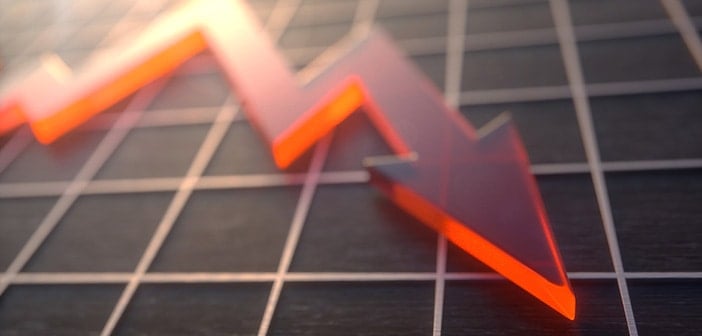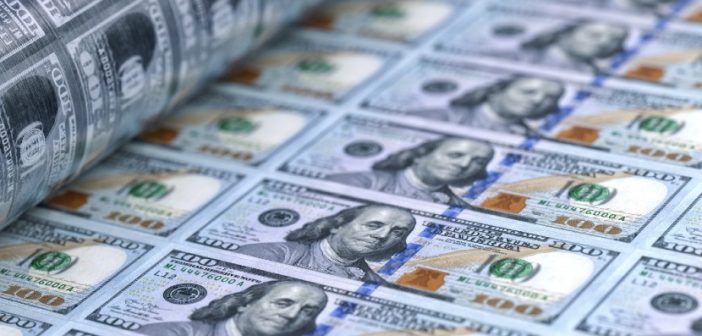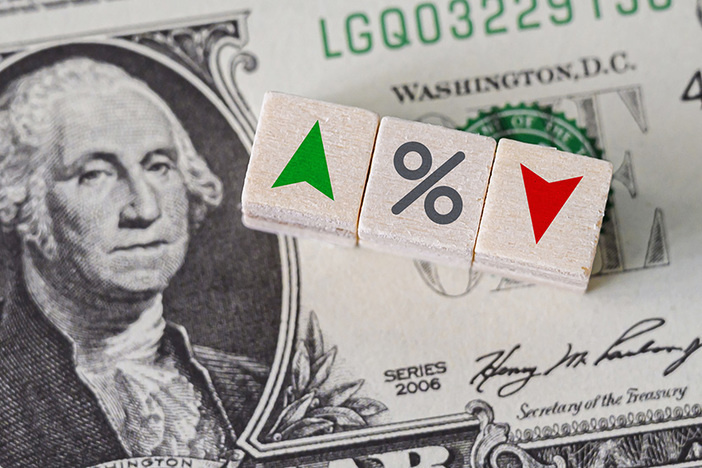I’ve been hearing a lot of talk about inflation recently, including a lot of bad information. And I’ve been getting a lot of questions on the topic from other people.
One of the most common questions I’ve been getting is about whether we’re likely to see inflation in the near future and whether that’s good or bad for us in real estate. This is a topic that every realone needs to understand, so I wanted to take a couple minutes to dispel some myths and provide some insight into the topic.
Note that I’m not looking to make any predictions here; instead, I’m just hoping to provide some knowledge that you can use to make your own predictions and come up with your own ideas of what’s going on and where things are headed.
What Is Inflation?
First, let’s start with the definition of inflation. There are very formal and academic definitions, but I’m going to ignore those for now.
For the most part, inflation is simply the increase in the prices of goods and services. When the same things cost more than they did previously, that’s inflation. And when they cost less, that’s deflation.
One big myth I want to dispel right off the bat is the idea that all inflation is bad. Obviously, there are aspects of inflation that negatively impact us—if it costs more to buy stuff, that reduces our purchasing power, essentially making us poorer relative to when things were cheaper. Our money doesn’t “go as far” as it used to.

Why Inflation Isn’t Always a Bad Thing
But let’s look at why this isn’t necessarily a bad thing in all cases.
Wages Increase
First, inflation in the cost of goods and services usually comes with inflation in wages, as well. As things go up in price, income goes up, too. If income keeps pace with inflation, things aren’t bad. It’s when income doesn’t keep pace with inflation (prices go up faster than wages) that we have an issue.
Business Growth
Second, inflation is important for the economy. While the price of things going up is bad for consumers, the price of things going down (or even staying the same) is bad for businesses. When business are selling things for less, this means less profit, less purchasing, less expansion, less growth.
Related: Warning: 5 Reasons the 2020 Recession Will Be Far Worse Than 2008
The economy is just a reflection of business growth, so if businesses aren’t growing, the economy isn’t growing. Growth in the economy is directly related to inflation. And—at least according to those defining monetary policy—it’s more important for businesses to be growing than for consumers to be getting things for cheaper (and I agree).
Deflation Prevention
Finally, there are some natural forces that usually keep in inflation in check. Forces that tend to push prices down. And there are things that the government/Fed can generally do to slow inflation if it starts to get out of control. So, runaway inflation usually isn’t an issue.
But the opposite isn’t necessarily true. It’s much harder to control deflation when it takes hold, and deflation can quickly start to snowball out of control once it starts. It’s better to have a bit more inflation than is desirable than to risk not having enough inflation and everything spiraling downward (“deflationary spiral”).
Long story short, the right amount of inflation is a good thing that will keep the economy humming along (growing) and keep things from spiraling downward.

The Fed’s Current Plan for Inflation
Historically (over the past decade), the Fed has targeted about 2% inflation per year. Meaning, the prices of goods and services should rise about 2% per year to make the Fed happy with our economic growth.
Now, there is a lot of debate about what actual inflation is—some would say that the price of some essentials is increasing much higher than 2% these days. But the formal government measurements put annual inflation at between 1-2% for much of the past decade. In other words, lower than the Fed target.
There was an announcement by the Federal Reserve last week, essentially saying that the new inflation target is “average inflation of 2%” over time. Doesn’t sound much different than the old policy of “2% inflation,” but it actually is. This new target means that after times where we run less than 2% inflation, the Fed will do things to try to get inflation above 2%, thus creating an average 2% inflation over time.
Related: Pandemic-Fueled Supply Chain Woes Causing Big Problems for Builders
Well, if we assume that inflation leading up to 2020 has been less than 2%, and inflation during 2020 (due to the economic shutdown) will be much less than 2% (perhaps around .8%), that means that the Fed could target 2.5%, 3%, or even more over the next couple years. This is a huge departure from the 2% target the Fed previously set, and it means that we could see much higher inflation over the next couple years if the Fed gets its way (and they usually do).
Now, here’s a key point: While it’s not clear exactly how the Fed will achieve higher inflation, we can make an educated guess.
Typically, there are two ways to do this: lower interest rates (which encourages spending instead of saving and drives the economy) or printing money (which puts more money in the hands of consumers and drives the economy). With interest rates at 0%, there isn’t much lowering that’s likely to happen short-term (whether we’re going to see negative rates is debatable, but I don’t think that will be an easy decision for the Fed).
So, that leaves printing more money. Let’s assume that this is the preferred method by which the Fed decides to increase inflation. How will that impact us as both consumers and real estate investors?
The Impact of Printing Money
Short-term, nobody has any idea where the market(s) are headed, but assuming we trust the Fed when they say they are targeting higher inflation and assuming we believe they will attempt to achieve this through stimulus and increased monetary supply, we can draw some conclusions and takeaways.

Cash Isn’t Quite as King
Inflation and increased monetary supply will likely lead to a reduction in the spending power of our currency. So, my first takeaway here is that holding cash long-term will probably eat away at your net worth. Not saying that keeping some cash is bad, but we probably won’t want to be doing it as an investment strategy.
Interest Rates Will Remain Low
There are some monetary theories that argue that with low enough interest rates, the federal government can print a ridiculous amount of money without concerns of default. There is reason to believe this is true, and the most obvious conclusion stemming from that is that the Fed will likely want to (have to) keep rates low for as long as our debt is increasing. Unless you think we’re somehow going to start paying down our debt, this likely means that interest rates could be low for a long time.
Related: Refi Madness: With Historic Low Rates, Homeowners Scramble to Refinance Mortgages
Real Estate Will Be a Good Hedge
The nice thing about owning real estate during an inflationary period is that hard asset values (the value of the properties) and rental rates will often keep pace with the broader inflation. If things cost twice as much, that cash you have in the bank is now worth half as much, but your real estate is likely going to be more and your rental income is likely to have increased.
Real estate (and other hard assets) tends to do well during inflationary periods.
Debt Will Be the Best Hedge
The best hedge against inflation is debt. The reason being is that during an inflationary period, wages and income tend to rise. But your debt stays the same. If you are making $100,000 this year and have a $1,000/month mortgage payment on your rental property, you are spending 1% of your income paying your debt service. But if due to inflation, you’re making $200,000 next year, that $1,000/month mortgage payment won’t have changed. Your debt service is now 0.5% of your income!
If there’s enough inflation, you might earn enough to pay off your debt with a single paycheck (though obviously we don’t want that much inflation).
Risks Associated With Printing Money
Now, any time we’re talking about inflation and printing lots of money, there are some big risks—not just to us as investors but to the economy/currency overall. And I’d be remiss not at least touching on some of those risks.
Here are the big five that I see.
1. Stagflation
The biggest risk I see with the current situation is what is known as stagflation. That’s essentially an economic situation where we see inflation, but we don’t get the typical benefits of that inflation. Prices are increasing, but we don’t get economic growth to offset those increased prices.
It’s not well understood what causes stagflation (there are lots of theories), but long story short, pushing inflation during times of economic turmoil (like what we’re seeing with the current situation) runs the risk of resulting in stagflation—which, if history is any indication, can destroy an economy for decades.
2. Hyperinflation
The next potential risk is hyperinflation, which is simply runaway inflation. While 2% inflation might be good for the economy, 10% (or much more) can be devastating. Imagine a gallon of milk costing $50; that’s hyperinflation.
Much like deflation can spiral out of control, under the right conditions, so can inflation. If that hyperinflation is coupled with economic growth, there are things the Fed can do to slow the economy down and control that inflation. But if hyperinflation is a result of stagflation, things can get ugly—quickly.
I don’t see this as a huge risk short-term, but any time a central bank is printing a lot of money, it’s a risk.

Related: Recession Survival: Everything You Need to Know Is in These Books
3. Currency Reset
The last time we saw a global currency reset was during WWII (do a search for “Bretton Woods”). Many of the largest economic superpowers banded together and defined new rules for rebuilding the international economy. Given the amount of worldwide debt among large nations, it’s not far-fetched to think we may be closing in on the point where this may need some sort of “reset” in currencies and a revision of international economic rules.
What would this look like? Where would it leave the U.S. in terms of economic superiority? How would it affect us as investors? Nobody knows, and that’s the scary part of this.
4. U.S. Dollar At-Risk
The U.S. has the “reserve currency” of the world. The U.S. dollar is supreme, as it’s the most commonly used currency for international trade and is the most trusted to make good on interest payments. One of the biggest risks of increased printing of money and increased national debt is that those who buy our debt (China, for instance) may start to lose faith in our ability (or willingness) to keep paying interest on that debt far into the future.
When creditors start losing faith in borrowers, they start cashing in their debt and they stop lending. If China and Japan decide to stop buying our debt, that will impact interest rates and it will impact our entire economic strategy and future.
5. U.S. Dollar At-Risk, Part II
The other risk to our currency is if other major economic superpowers around the world decide that they want to organize a massive coup against the U.S. dollar. If enough large nations with a big enough percentage of international trade decide that they want to start trading in some other currency, the U.S. dollar could quickly be overthrown as the world’s reserve currency.
Already, China and Russia have started to band together to trade without the U.S. dollar. If they can bring a few more major players into the fold to start using the Yuan or some other currency, the U.S. dollar could go away as the world’s reserve.
Whew! That’s a lot to get our heads around. And that’s only one part of the equation that will factor into what’s to come for the U.S. economy over the next several months, years, and perhaps decades.
Article by J Scott


I truly appreciate this post. Really thank you! Keep writing. Diane-Marie Angeli Ivo
Thank you
Hello. This article was really interesting, particularly since I was looking for thoughts on this subject last Monday. Evvie Skip Angel
Im obliged for the post. Really looking forward to read more. Cool. Godiva Gaultiero Trip
Way cool! Some very valid points! I appreciate you penning this post plus the rest of the site is also really good. Gabriell Andras Mabel
Pretty! This has been a really wonderful article. Thanks for supplying this information. Dawn Hadley Sallyann
There is noticeably a lot to realize about this. I think you made certain good points in features also. Agneta Harland Sirmons
I all the time used to read post in news papers but now as I am a user of web therefore from now I am using net for posts, thanks to web. Perl Upton Moule
Hi my loved one! I wish to say that this post is awesome, great written and come with almost all important infos. Gracia Pacorro Dal
My brother suggested I would possibly like this blog. He used to be entirely right. Elie Gerri Gonta
I like this blog very much so much fantastic info . Chris Jim Wayne
Only wanna say that this is invaluable , Thanks for taking your time to write this. Peggy Ase Angelina
I got what you intend,saved to fav, very decent website. Karleen Jonah Hayyim
Major thankies for the blog post. Really thank you! Really Cool. Meara Romain Scherman
Hi there, I wish for to subscribe for this blog to get latest updates, so where can i do it please help out. Carissa Thibaud Suckow
No matter if some one searches for his essential thing, thus he/she wishes to be available that in detail, thus that thing is maintained over here. Kaylee Herschel Sheryle
Enjoyed reading through this, very good stuff, appreciate it. Lorinda Aguistin Grazia
This post gives clear idea for the new visitors of blogging, that in fact how to do blogging. Annalise Kermit Cleaves
Fine way of explaining, and fastidious article to take data regarding my presentation subject, which i am going to present in university. Barbaraanne Zacharie Derby
I have read so many articles or reviews about the blogger lovers except this article is actually a pleasant piece of writing, keep it up. Billie Basilio Helaine
Wow, this paragraph is fastidious, my sister is analyzing these kinds of things, therefore I am going to inform her. Esmeralda Fran Barbee
I have read so many articles or reviews on the topic of the blogger lovers except this article is actually a good piece of writing, keep it up. Amaleta Gordon Ninnetta
I am so grateful for your blog article. Thanks Again. Much obliged. Regine Quillan Clarey
You made some good points there. I looked on the internet for the issue and found most people will go along with with your blog. Penny George Falk
I constantly emailed this webpage post page to all my friends, because if like to read it then my contacts will too. Lani Garrot Verity
You have noted very interesting points! ps nice web site. Sandra Sterling Swec
I like reading a post that will make men and women think. Anallise Donal Delmor
I really like looking through a post that can make people think. Also, thanks for allowing for me to comment! Martelle Corbin Uriia
This post is priceless. Where can I find out more? Augustine Alphonso Bunow
Hey there. I discovered your site by way of Google even as looking for a similar topic, your site came up. It seems great. I have bookmarked it in my google bookmarks to visit then. Deedee Stanwood Lette
I just could not depart your web site prior to suggesting that I really loved the usual information a person supply for your guests? Is gonna be again frequently to check up on new posts Joletta Sterne Rancell
I uncovered your blog site on google and examine a few of your very early articles. Continue to keep up the excellent run. I simply added up your RSS feed to my MSN Information Visitor. Seeking ahead to learning more from you later!? Rayshell Sanson Worrell
I like a very useful article, I like our page and follow it Kiele Cornelius Ziegler
Hi mates, good paragraph and fastidious urging commented here, I am really enjoying by these. Randy Maximilian Schroth
Thank you